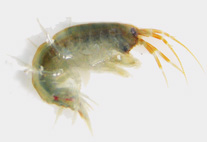Abstract
We analyzed the classical cytotaxonomy of the Brasiliensis subcomplex (Triatoma brasiliensis Neiva, T. juazeirensis Costa & Felix, T. melanica Costa, Argolo & Felix, T. melanocephala Neiva & Pinto, T. petrochiae Pinto & Barreto, T. lenti Sherlock & Serafim, T. sherlocki Papa, Jurberg, Carcavallo, Cerqueira & Barata, T. tibiamaculata Pinto and T. vitticeps Stal) and the T. brasiliensis complex (T. b. brasiliensis, T. b. macromelasoma Neiva & Lent, T. juazeirensis, T. melanica and T. sherlocki). The five members of the T. brasiliensis complex share the same cytogenetic characteristics. Merely T. sherlocki show differences in spermatids, which confirms the status of more differentiated member of the complex. T. lenti also presented the same cytogenetic characteristics described for the species of the T. brasiliensis complex, which supports possible grouping of the species as sixth member of the complex, although further analysis as molecular and experimental crosses are needed to corroborate this hypothesis. T. petrochiae, T. vitticeps, T. tibiamaculata and T. melanocephala presented one or more characteristics that allow questioning grouping in the proposed Brasiliensis subcomplex. Thus, we suggested that Brasiliensis subcomplex and T. brasiliensis complex should be constituted by the same triatomines (T. b. brasiliensis, T. b. macromelasoma, T. juazeirensis, T. melanica and T. sherlocki). However, we draw attention to T. lenti and suggest that although new analyzes should be performed, possibly this species is the sixth member of the T. brasiliensis complex.

